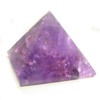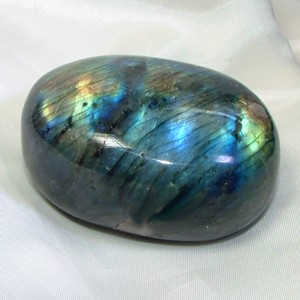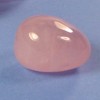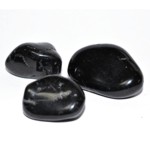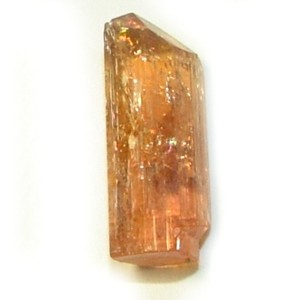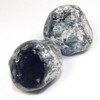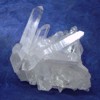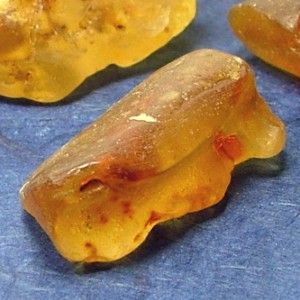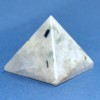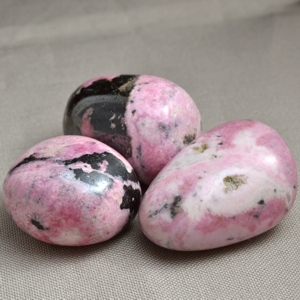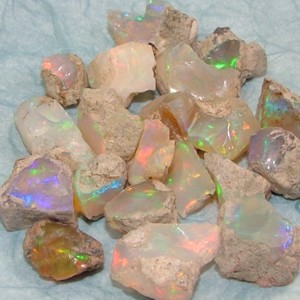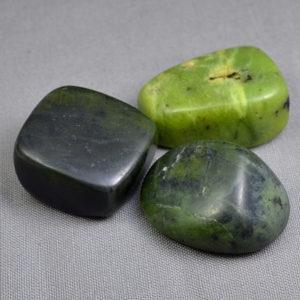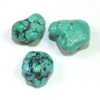Gemstone Folklore and Legends
| Gemstone Articles | |||||
|
|
Gemstone Folklore and LegendsPrecious and semi-precious stones have a long history with man. Stone bowls, fetishes, and jewelry have been found in caves that were inhabited over 5000 years ago! The ancient Babylonians, Greeks, Romans, and Egyptians all revered these stones and used them for everything from talismans to medicine, makeup to burial items. It is said that Emperor Nero watched the gladiator games by looking through a large emerald.
|
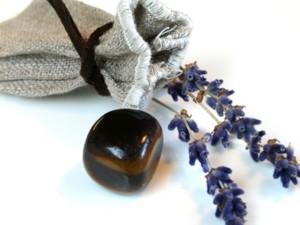 |
|||
|
|
Along with the usage of these stones came myths of how the stones were first created, as well as legends about their various abilities and properties, some of them quite far-fetched or even bizarre! For instance, in Romania it was once believed that possessing a piece of chrysoprase would give one the ability to understand the language of reptiles! Below are a few interesting myths and legends from all over the world regarding precious and semi-precious gemstones: In Greek myth, one day Dionysus, the god of wine, celebration, intoxication, and joviality, became enraged with the mortals and decided he would take revenge by letting his two fierce tigers devour the next mortal to cross his path. He immediately spotted a beautiful young virgin maiden named Amethysta who was on her way to Diana’s temple to pay homage to the goddess. The wrathful god detained Amethysta and unleashed his hungry tigers upon her. Amethysta cried out to Diana for help. When Diana saw what was about to happen, she turned Amethysta into a statue of gleaming clear quartz, thereby protecting her from the tigers. When Dionysus realized the ruthlessness of his actions, filled with remorse, he began to weep tears of wine over the statue. The tears stained the quartz statue purple, thus creating the stone Amethyst. Malachite was once used as a talisman to protect the wearer from enchantments, evil spirits, and the attacks of venomous creatures. An Inuit legend says that long ago the Northern Lights fell from the sky and were trapped inside some rocks off the coast of Labrador. One day, an Inuit warrior came upon these rocks and tried to set the Northern Lights free. With blows from his spear, he was able to release most of the lights, but some still remained to be permanently imprisoned within the rocks. The trapped Northern Lights are what give the stone we know today as labradorite its brilliant flashes of light and color. The Native Americans used hematite to make a red face paint called red ochre. They used this as war paint and believed that it would make them invincible in battle. Similarly, the ancient Romans also believed hematite would bring them invincibility during battle as well as strength and courage. They crushed the stone and rubbed the powder on their bodies. It has been said that giving rose quartz to a baby will aid them on their transformation from the spirit world to their physical body. An ancient Egyptian legend says that as the stone tourmaline traveled its long journey from the heart of the Earth up towards the Sun, it traveled along a rainbow and collected all the colors of the rainbow along the way, and this is why tourmaline comes in almost every color. Venus, the goddess of love and beauty, was resting by the Indus River when her son, Cupid, came along and used the point of one of his enchanted arrows to give his mother a manicure while she slept. With the nail clippings in his hands, he joyfully flew up into the sky, but with all of his happiness and excitement, he accidentally dropped the clippings and they fell into the river. As nothing of heavenly origin could die, the nail clippings were turned into onyx. The name “onyx” comes from the Greek meaning “fingernail or claw”. Golden topaz was once said to change color when in the presence of poisoned food or drink, making it the stone of choice for much of royalty, and thereby bringing us the name imperial topaz. In Arizona, the Apaches had made several raids on one particular settlement. After these raids, the military and some volunteers banded together and followed the tracks of the stolen cattle back to where the Apaches lived. At dawn, they attacked. The Apaches were completely surprised and outnumbered in the attack. About two-thirds of the Apache warriors were killed by the first volley of shots. The rest of the Apache warriors retreated. As they were almost completely surrounded, the only place for them to go was to the edge of a cliff. Rather than die at the hands of a white man, these last warriors chose death by leaping over the cliff’s edge. The apache women of those who had died gathered at the base of the cliff, and for a moon they wept for their dead. They mourned, not only because their warriors had all died, but also because the fighting spirit of the Apaches had died with them. Their sadness was so great that the Great Spirit encased the tears of the Apache women into black stones we now call apache tears. The Ancients believed that clear quartz was water from the heavens that the gods had frozen into eternal ice. This belief continued to exist as late as the 16th century when even scientists believed that quartz crystal was fossilized ice. According to legend, Alexander the Great’s long-held winning streak was due to his wearing a brilliant chrysoprase gemstone on his girdle when in battle. One day, when returning from a victory in India, he stopped to have a bath in the Euphrates River. While his girdle lay on the riverbank unattended, a serpent came upon it and bit off the precious gem, and then slid into the water with it. After having lost his special talisman, Alexander never won another battle. Sailors believed that burning amber would keep them safe from sea monsters. Phaeton convinced his father Helios, the sun god, to let him drive the sun chariot across the sky for a day. Phaeton’s travels started off okay, but it did not take long for the wild horses pulling the chariot to realize that they were being driven by an inexperienced hand, and so they bolted and Phaeton could not control them. As they drove too far away from the Earth, the Earth became very cold. Then they went too close to the earth and turned much of Africa into a desert. In order to save the entire Earth from burning, Zeus had no choice but to strike Phaeton down with one of his lightning bolts. Phaeton’s body fell dead into the Eridanus River. His three sisters, the Heliades, came to the river and wept day and night for their dead brother. Wasting away on the riverbank, their bodies eventually took root and became covered with bark. Their arms became branches and the three sisters turned into poplar trees. Their tears, however, continued to flow, and as they hardened in the sun, they turned into amber. It was once believed that sitting over the smoke of burning amber was a cure for hemorrhoids. According to Vedic legend, a battle was fought between Lord Vishnu and Bali, the demon god. Vishnu destroyed Bali by breaking his body into many pieces. As each piece fell to the Earth, they were turned into many various jewels. It is said that the “chandrakanta”, or moonstone, was formed from the gleam of Bali’s eyes. The Incas believed that rhodochrosite, which they called Inca Rose, was the blood of their former kings and queens turned to stone. An Australian aboriginal legend tells how a pelican and an opal brought fire to the people. One day the Wangkumara people decided to send a pelican to the Northern Territory so when it came back it could tell them what was there. The pelican left carrying all the fish and water it would need for the journey stored in the pouch of his beak. After flying for a while, the pelican decided to land on top of a hill to rest. The pelican looked down at the ground beneath him and was in awe of the many beautiful colors in the rocks at his feet. What he saw was opal. The pelican was so intrigued by the multi-colored stones that he began to peck at them with his beak. Suddenly, sparks flew out and landed in the dry grass nearby. Flames slowly rose and began to spread down the hill towards a group of Wangkumara camping at the base of the hill. For the first time, the people were able to cook their meat and fish, and they were very grateful for this new gift. A legend says that a Chinese emperor once offered 15 cities in exchange for a jade carving that he could hold in one hand. In Native American folklore, it is said that once there was a chief with skin the color of turquoise. One day he was running from his enemies through the hot desert. Whenever he stopped to rest, beads of his sweat fell to the ground, collected in rocks, and became turquoise. The Pima considered turquoise to bring strength and good fortune and that it helped overcome illness. The Zuni believed that turquoise protected them from demons. In Hopi legend, there is a lizard who travels between the Above and the Below and excretes turquoise. The Apache believed that attaching turquoise to a weapon would improve its accuracy. They also believed that wearing turquoise would prevent them from a fall or breaking a bone, and that putting turquoise on a horse’s bridle or in its mane would ensure that the horse would be sure-footed. The Pueblos thought that the color of turquoise was stolen from the sky. The Navajos believed that they would be blessed with rain by throwing a piece of turquoise into a river while praying to the rain gods.
|
||||

